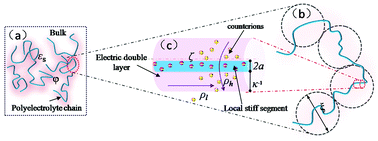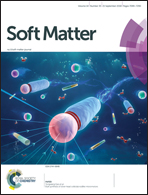Effect of grafting density on conformation of poly(acrylic acid) in solution by dielectric spectroscopy†
Abstract
The effect of grafting density of poly(ethylene oxide) and dodecyl groups on the conformation of poly(acrylic acid) in solution was clarified by dielectric relaxation spectroscopy over a frequency range from 40 Hz to 110 MHz. Two distinct dielectric relaxations were found after the elimination of electrode polarization, and valuable information about the conformations and interfacial electrokinetic properties of molecules was obtained by analyzing the dielectric spectra based on a refined double-layer polarization model. The critical aggregation concentration was determined by the concentration dependency of dielectric parameters. The results based on zeta potential suggested that the ionization performance and behavior of counterion condensation were strongly influenced by the grafting density of poly(ethylene oxide) and dodecyl groups. The concentration dependency of correlation length, ratio of zeta potential, ratio of linear density of counterions, and the Debye length showed that the chain length and degree of intermolecular aggregation were also strongly influenced by the grafting density. We revealed the role of grafting density with respect to electrostatic interaction in determining the chain conformation of polyelectrolytes in solution.



 Please wait while we load your content...
Please wait while we load your content...